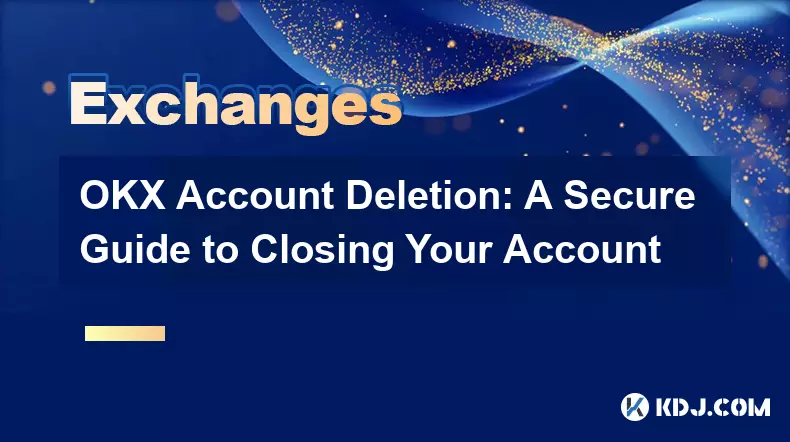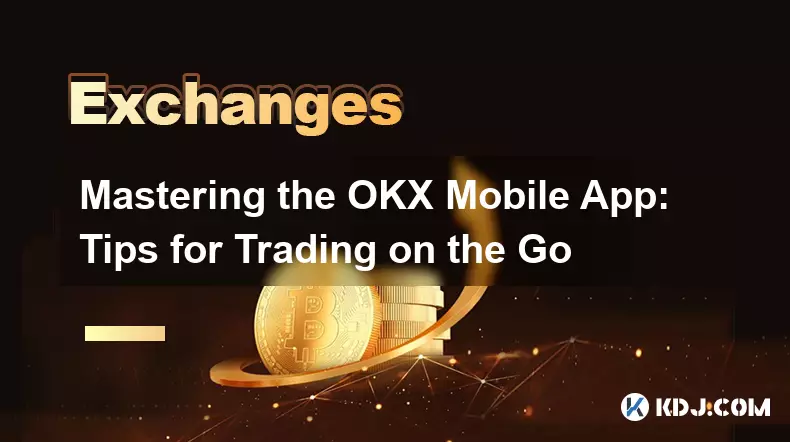-
 bitcoin
bitcoin $102877.190955 USD
1.88% -
 ethereum
ethereum $3430.435064 USD
4.52% -
 tether
tether $0.999264 USD
-0.05% -
 xrp
xrp $2.307310 USD
4.49% -
 bnb
bnb $987.740692 USD
3.82% -
 solana
solana $161.947760 USD
3.97% -
 usd-coin
usd-coin $0.999712 USD
-0.05% -
 tron
tron $0.292810 USD
2.93% -
 dogecoin
dogecoin $0.179738 USD
10.70% -
 cardano
cardano $0.580716 USD
8.75% -
 hyperliquid
hyperliquid $42.463448 USD
8.40% -
 chainlink
chainlink $15.763437 USD
7.05% -
 zcash
zcash $649.595636 USD
17.21% -
 bitcoin-cash
bitcoin-cash $511.610261 USD
7.19% -
 stellar
stellar $0.292537 USD
7.91%
How to check OKX's Proof of Reserves?
OKX publishes monthly Proof of Reserves reports, audited by firms like MHA Cayman, to verify its crypto holdings match user balances across major blockchains.
Oct 31, 2025 at 01:54 am

Understanding Proof of Reserves in the Cryptocurrency Ecosystem
1. Proof of Reserves (PoR) is a transparency mechanism used by cryptocurrency exchanges to demonstrate that they hold sufficient assets to cover user balances. This process helps build trust among traders and investors who rely on platforms like OKX for storing and trading digital assets.
2. The verification typically involves an independent auditor reviewing the exchange’s wallet addresses and confirming that the total reserves match or exceed customer liabilities. These audits are often conducted periodically and made publicly available.
3. Cryptographic proofs such as Merkle trees are commonly used to ensure data integrity without exposing sensitive user information. Each user can verify whether their balance is included in the overall reserve report through a unique hash.
4. Unlike traditional financial institutions, crypto exchanges operate in a decentralized environment where regulatory oversight varies. Therefore, PoR reports serve as a critical tool for self-regulation and accountability within the industry.
5. Exchanges like OKX publish these reports regularly to reassure users about the solvency of their operations, especially after periods of market volatility or major withdrawals.
How to Access OKX's Official Proof of Reserves Report
1. Navigate directly to the official OKX website and locate the 'Proof of Reserves' section, usually found under the 'Transparency' or 'Security' tab in the footer menu.
2. OKX provides monthly PoR reports generated in collaboration with third-party auditors such as MHA Cayman or Armanino. These documents include detailed breakdowns of on-chain wallet holdings across multiple blockchains including Bitcoin, Ethereum, and Binance Smart Chain.
3. The report contains a list of verified wallet addresses controlled by OKX, along with real-time balance snapshots taken at specific block heights. Users can cross-reference these addresses using blockchain explorers like Blockchair or Etherscan.
4. Each report includes a Merkle tree root hash, which allows individual users to check if their account balance was accounted for in the audit. A dedicated verification tool is provided by OKX where users input their UID to generate a personal proof.
5. Downloadable JSON files and PDF summaries are available for deeper analysis. These files contain timestamped data, cryptographic signatures from auditors, and asset-by-asset reconciliation figures showing total reserves versus customer liabilities.
Verifying On-Chain Data Independently
1. Once you have obtained the list of OKX’s public wallet addresses from the PoR report, use blockchain explorers relevant to each network—such as Blockchain.com for BTC or Polygonscan for MATIC—to validate current balances.
2. Compare the block height cited in the report with the corresponding historical state of the blockchain. This ensures that the snapshot was not manipulated using real-time transactions prior to recording.
3. Use the Merkle proof verifier provided by OKX to confirm inclusion of your funds. Enter your user ID and follow the prompts to generate a cryptographic path linking your balance to the published root hash.
4. Analyze the auditor’s signature on the report. Reputable firms sign the document cryptographically, allowing anyone to verify authenticity using public key infrastructure tools.
5. Monitor changes over time by reviewing past PoR reports. Consistent growth in reserves relative to liabilities indicates responsible custody practices, while discrepancies may warrant further scrutiny.
Common Questions About OKX Proof of Reserves
What blockchains does OKX include in its Proof of Reserves?OKX publishes reserve data for major blockchains including Bitcoin (BTC), Ethereum (ETH), Binance Smart Chain (BSC), Polygon (MATIC), Arbitrum, Optimism, and Tron (TRX). Each chain’s wallet addresses and balances are listed separately in the monthly report.
Can I verify my own balance in the Proof of Reserves?Yes. Using the OKX Proof of Reserves verification page, enter your User ID (UID) to retrieve your hashed position in the Merkle tree. The system will display your balance and show how it contributes to the total liability figure, ensuring your funds are accounted for.
Who audits OKX’s Proof of Reserves?OKX collaborates with established auditing firms such as MHA Cayman and has previously worked with Armanino LLP. These organizations perform regular reviews of on-chain data and issue signed attestations confirming the accuracy of the reported reserves.
How frequently are Proof of Reserves reports updated?OKX releases Proof of Reserves reports on a monthly basis. Each report includes a precise timestamp, block height, and real-time snapshot of wallet balances across all supported networks, ensuring timely transparency.
Disclaimer:info@kdj.com
The information provided is not trading advice. kdj.com does not assume any responsibility for any investments made based on the information provided in this article. Cryptocurrencies are highly volatile and it is highly recommended that you invest with caution after thorough research!
If you believe that the content used on this website infringes your copyright, please contact us immediately (info@kdj.com) and we will delete it promptly.
- Stablecoins, Monetary Policy, and the Fed: A New Balancing Act?
- 2025-11-08 17:00:01
- Presale Wars: Digitap ($TAP) and BlockDAG – A 1000x Face-Off?
- 2025-11-08 16:45:02
- Bitcoin Crash Incoming? Peter Schiff's Gold Bugle Sounds Again!
- 2025-11-08 17:15:01
- Zcash Soars Past $500: Privacy Coin Rally Ignites!
- 2025-11-08 17:05:01
- Ethereum Price, Bitcoin, 2027 Prediction: What's the Buzz?
- 2025-11-08 17:15:01
- Solana ETFs and Trading: Riding the Institutional Wave
- 2025-11-08 17:20:02
Related knowledge

Common Mistakes to Avoid on OKX: A Guide for New Traders
Nov 04,2025 at 03:37pm
Understanding the Interface Before Trading1. New traders often jump into placing orders without fully exploring the OKX platform layout. Taking time t...

OKX TradingView Integration: A Guide to Advanced Chart Analysis
Nov 02,2025 at 03:37am
OKX and TradingView: Bridging the Gap for Professional Traders1. OKX, one of the leading cryptocurrency exchanges, has integrated with TradingView to ...

Finding Your OKX Deposit Address: A Quick and Safe Guide
Nov 05,2025 at 01:15pm
Finding Your OKX Deposit Address: A Step-by-Step Process1. Log into your OKX account using your registered credentials. Ensure you are accessing the o...

OKX Savings Guide: A Low-Risk Strategy for Earning Crypto
Nov 05,2025 at 06:55am
Understanding OKX Savings and Its Role in Crypto Earnings1. OKX Savings offers users a straightforward method to earn passive income by leveraging idl...

OKX Account Deletion: A Secure Guide to Closing Your Account
Nov 05,2025 at 08:44am
Understanding the Implications of Account Closure1. Closing your OKX account permanently removes access to all associated trading features, including ...

Mastering the OKX Mobile App: Tips for Trading on the Go
Nov 05,2025 at 01:19am
Streamlined Navigation for Efficient Trading1. The OKX mobile app features a clean and intuitive interface that allows traders to access key functions...

Common Mistakes to Avoid on OKX: A Guide for New Traders
Nov 04,2025 at 03:37pm
Understanding the Interface Before Trading1. New traders often jump into placing orders without fully exploring the OKX platform layout. Taking time t...

OKX TradingView Integration: A Guide to Advanced Chart Analysis
Nov 02,2025 at 03:37am
OKX and TradingView: Bridging the Gap for Professional Traders1. OKX, one of the leading cryptocurrency exchanges, has integrated with TradingView to ...

Finding Your OKX Deposit Address: A Quick and Safe Guide
Nov 05,2025 at 01:15pm
Finding Your OKX Deposit Address: A Step-by-Step Process1. Log into your OKX account using your registered credentials. Ensure you are accessing the o...

OKX Savings Guide: A Low-Risk Strategy for Earning Crypto
Nov 05,2025 at 06:55am
Understanding OKX Savings and Its Role in Crypto Earnings1. OKX Savings offers users a straightforward method to earn passive income by leveraging idl...

OKX Account Deletion: A Secure Guide to Closing Your Account
Nov 05,2025 at 08:44am
Understanding the Implications of Account Closure1. Closing your OKX account permanently removes access to all associated trading features, including ...

Mastering the OKX Mobile App: Tips for Trading on the Go
Nov 05,2025 at 01:19am
Streamlined Navigation for Efficient Trading1. The OKX mobile app features a clean and intuitive interface that allows traders to access key functions...
See all articles





















![The Graph Price Prediction [GRT Crypto Price News Today] The Graph Price Prediction [GRT Crypto Price News Today]](/uploads/2025/11/07/cryptocurrencies-news/videos/690d4df44fe69_image_500_375.webp)



















































